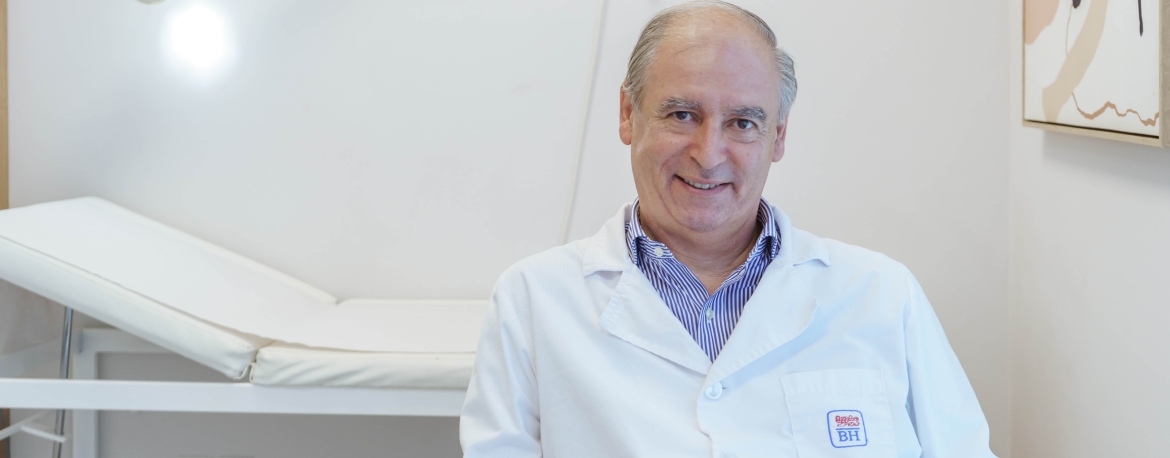MEDIO DE PUBLICACIÓN
Diario EL PAIS
El Hospital
Prensa
Un centro de referencia para el cáncer de piel

El Británico incorporó nuevo equipamiento tecnológico para el diagnóstico y el tratamiento de las enfermedades de la piel.
Producto de su política de desarrollo enfocada en la prestación de servicios de salud de excelencia, el Hospital Británico incorporó nuevo equipamiento tecnológico a su Departamento de Dermatología, que lo confirma como centro de referencia para el diagnóstico y tratamiento de enfermedades de la piel.
Su Departamento de Dermatología, que tiene 15 especialistas, inició en 2019 un proceso que incluye la adopción de nuevas tecnologías en áreas como la imagenología dermatológica y la fototerapia. Incorporó tres equipos que potenciarán sus actividades y redundan en beneficios para socios y usuarios del Británico, pues facilitan una mejor precisión diagnóstica y favorecen una respuesta terapéutica más temprana.
Adquirió una Unidad de Fototerapia de última generación,que permite el tratamiento, con lámparas de radiación ultravioleta de banda estrecha, de enfermedades como la psoriasis, dermatitis atópica, vitiligo, prurito y linfoma cutáneo, entre otras. El registro computarizado permite además un mejor seguimiento y control de la evolución del paciente, conforme el plan terapéutico dispuesto.
Paralelamente, la Unidad de Imagenología del Departamento de Dermatología se amplió al adquirir dos equipos “fundamentales”, según su director, el doctor Carlos Carmona.
Se trata en primer lugar, explicó el especialista, de un microscopio confocal láser para diagnóstico in vivo de cáncer de piel, melanoma y no melanoma. “Este equipo permite realizar con alta precisión diagnósticos de cáncer, no melanoma y melanoma, sin necesidad de realizar biopsias diagnósticas”, explicó Carmona y destacó que se trata de un procedimiento “in vivo, no invasivo”. En este sentido facilita en muchos casos acelerar los tiempos del tratamiento quirúrgico. Y agregó que otro de los beneficios es la definición previa a la cirugía del límite exacto del tumor lo que permite planificar la cirugía con mayor precisión.
El segundo es un equipo de dermatoscopia digital con un sistema fotográfico de mapeo corporal total. La nueva tecnología incorporada “agrega precisión a la dermatoscopia digital previa. Posibilita escanear la superficie corporal mediante fotografías de alta definición, que permiten el seguimiento con mayor precisión de pacientes de riesgo para melanoma”.
Este equipo utiliza inteligencia artificial “para reconocer diferencias entre las fotografías a lo largo del tiempo en pacientes portadores, por ejemplo, de múltiples lunares. Captura las diferencias con imágenes de alta definición”, que permiten establecer si hay cambios significativos o nuevos lunares, graficó Carmona.
Insistió en que identificar lesiones sospechosas facilita el diagnóstico de la dermatoscopia digital tradicional y destacó que el mapeo corporal y el escaneo de las fotos y su comparación con las anteriores del mismo paciente es lo que permite avanzar en ese sentido.
Carmona subrayó la importancia de contar con estos equipos, no solo por ser de última generación, sino por lo que permiten en términos de no invasividad, precisión de diagnóstico y rápida respuesta terapéutica.
Estas incorporaciones se dan en el marco de un proceso continuo de actualización que se alimenta en trabajos de investigación y participación en eventos nacionales e internacionales de la especialidad.
